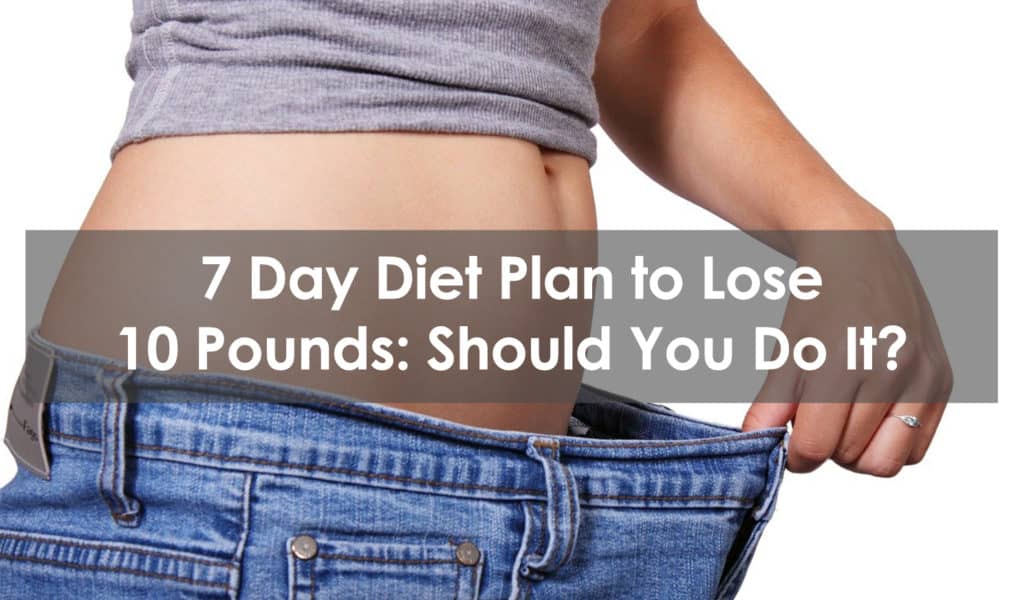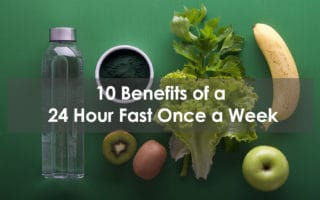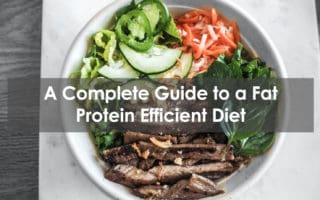The Internet is full of articles telling you how quickly you can lose “X” number of pounds…
”How much weight can you safely lose in a week?”
”How can you lose 1 pound per day?”
”Drop 10 pounds with this healthy meal plan!”
As I’ll explain, it may theoretically be possible to lose 10 pounds of scale weight (NOT body fat!) in a week. But is this a smart, sustainable strategy for weight loss? I’ll argue that it’s not.
Is it possible to lose 10 pounds in a week?
Individuals always vary but hypothetically speaking it is possible that you could see a loss of 10 pounds from your scale body weight in just a week’s time. What you may not realize is that of these 10 pounds, very little of it will actually be from your fat stores.
1 pound of fat consists of about 3,500 calories. This means that in order to lose 1 pound of fat, you will need to maintain a caloric deficit of 3,500 calories (where you are burning 3,500 calories more than you’re eating). Therefore, in order to lose 10 pounds of pure body fat, your daily calories deficit will need to be even higher to keep you losing at a rate of more than 1 pound per day.
This would be a superhuman feat and is next to impossible in the real world.
However, it is theoretically possible that you could lose 10 pounds of body weight in a single week — it would still be difficult, but it is doable. The important thing to keep in mind is that the weight that you lose will be primarily comprised of water weight lost from your body’s glycogen stores, as well as reduced food intake leading to lighter stomach content.
A better approach to losing weight
The best advice anyone could give you regarding weight loss is to exercise patience. You gain excess weight over a long period of time, and it is going to take time to lose it.
For best results, keep the following guidelines in mind when designing your weight loss strategy.
All diets work for weight loss, as long as you’re in a consistent calorie deficit.
Choose a diet plan that you think you will personally enjoy, not a fad diet that is popular on the Internet (I.e., “7-day diet to lose 10 pounds”). If you love sweet potatoes, black beans, and brown rice, a “7-day keto diet plan” is probably not for you. On the other hand, if you enjoy fattier foods and drinking a cup of skim milk with a plate of scrambled egg whites doesn’t appeal to you, keto recipes may be more up your alley.
Make it a lifestyle
Make identity-based habit changes that will lead to consistent, long-term weight loss. This is not a 7-day diet — it is your new life, and you need to choose a healthy diet that will be sustainable over the long haul.
Slow and steady weight loss
If you have a lot of excess weight to lose, keep in mind you will probably lose at a faster rate. If you don’t have a lot of extra pounds to lose (maybe just 10-15 pounds or so), you will probably lose weight more slowly.
Plan on losing about 0.5-1% of your total body weight per week (so if you’re 200 pounds, your goal would be to lose 1-2 pounds per week). Remember — losing weight will not be a linear process; it will take time, and there will be fluctuations and peaks and valleys.
Track calories — a strategy
If you do decide to track calories, this article by Aadam Ali will give you excellent guidelines to get you off to a good start.
First, set up your initial fat loss calories, according to the guidelines in the article (multiply your body weight in pounds by a factor of 9-14, depending on how active you are). You’ll need to adjust this number over time, as you may need more than one cycle of weight loss in order to reach your goal weight.
Then, make sure you’re getting enough protein to avoid unnecessary muscle loss. As a rule of thumb, aim for 1 g. protein per pound of body weight.
Finally, decide where the bulk of your remaining calories will come from — fat, carbs, or a mix of both. If you’d like to have a higher carb intake, keep your fat intake lower. On the contrary, if you’d prefer a higher fat intake, keep your carbohydrate intake lower.
Don’t track calories — another strategy
If you decide not to track calories, you can likely still make great progress, as long as you make the bulk of your food choices low-calorie foods. If you’re unfamiliar with the nutrition content of what you eat, here are some ideas of low-calorie foods to get you started:
- Lean protein sources (chicken breast, sirloin steak, 95% lean ground beef, turkey, cottage cheese, egg whites)
- Non-starchy vegetables (green beans, leafy greens, fresh cilantro, green peppers, bell peppers, cherry tomatoes)
- Zero-calorie beverages, because you want to cut out liquid calories (sparkling water, unsweetened almond milk, bone broth, black tea/coffee, water, diet sodas)
If you chose the low-carb diet pattern, here are foods that could be on the table for you (as long as you are aware of your portion size):
- Cheese (cheddar cheese, creamy goat cheese, feta cheese)
- Olive oil, avocado oil, butter
If you prefer a lower-fat approach, here are some foods you could enjoy that would be much harder to work into a low-carb approach:
- Sweet potatoes, baked potatoes
- White rice, brown rice, wild rice
- Fruit
The important key to remember, if you are not tracking calories, is to not eat BOTH high fat AND high carb at the same time. If you prefer fattier foods, limit carbs. If you prefer carbs, limit fat.
Remember — with weight loss, it’s a marathon, not a sprint. Although you likely have a goal weight — a number you’d love to see on the scale — the key to enjoyable and sustainable weight loss is to be patient, manage your expectations, and eat foods you enjoy (that are also low enough in calories to keep you losing weight).







